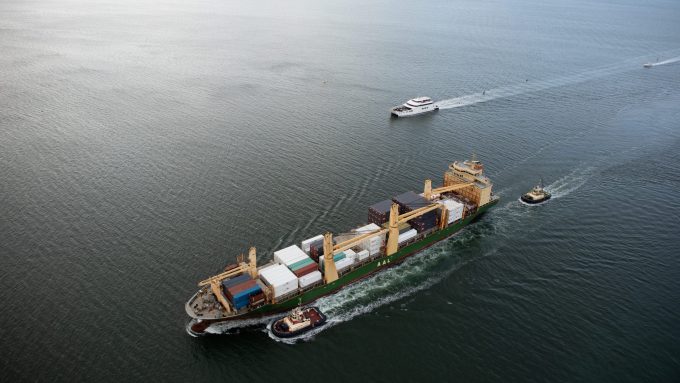Ocean carriers determined to hang onto containers as supply tightens
To facilitate the extra ships taken on charter due to the Red Sea crisis, ocean ...
TFII: SOLID AS USUALMAERSK: WEAKENINGF: FALLING OFF A CLIFFAAPL: 'BOTTLENECK IN MAINLAND CHINA'AAPL: CHINA TRENDSDHL: GROWTH CAPEXR: ANOTHER SOLID DELIVERYMFT: HERE COMES THE FALLDSV: LOOK AT SCHENKER PERFORMANCEUPS: A WAVE OF DOWNGRADES DSV: BARGAIN BINKNX: EARNINGS OUTODFL: RISING AND FALLING AND THEN RISING
TFII: SOLID AS USUALMAERSK: WEAKENINGF: FALLING OFF A CLIFFAAPL: 'BOTTLENECK IN MAINLAND CHINA'AAPL: CHINA TRENDSDHL: GROWTH CAPEXR: ANOTHER SOLID DELIVERYMFT: HERE COMES THE FALLDSV: LOOK AT SCHENKER PERFORMANCEUPS: A WAVE OF DOWNGRADES DSV: BARGAIN BINKNX: EARNINGS OUTODFL: RISING AND FALLING AND THEN RISING

The Multipurpose (MPP) time-charter index has dropped slightly for the first time since the beginning of the pandemic, evidence that containers on deck, a bonanza for the segment since 2020, has been showing signs of correction since April.
Starting Q220, the breakbulk, MPP and heavylift sectors were rescued from the pre-pandemic doldrums by spillover capacity from the container segment.
Many were hired in private charters to carry boxes on deck and the MPP time charter index has doubled since this began. But the latest evidence suggests this overspill is now being re-absorbed.
“The spike… is already starting to level out and rates are on the decline – albeit slowly,” said Felix Schoeller, AAL Shipping’s commercial director “MPP carriers are still carrying a significant volumes of containers on deck, and this is expected to continue for the remainder of the year at least.”
Susan Oatway, Drewry senior analyst, multipurpose & breakbulk shipping, added: “I don’t think it will ‘fall off a cliff’. Most carriers are booked three to six months and are fairly optimistic – for shipowners – for the next 12 months at least.”
Ms Oatway added that some of the smaller operators who moved into containers would lose that cargo over the next six-12 months, with the inevitable drift of breakbulk back into containers.
Given that this extra demand will dry up, MPPs could be forgiven for wondering where their next meal was going to come from. But Ms Oatway indicated that the fundamentals were more robust than before 2020, citing “little, if any” outside investment in new capacity.
“All the newbuildings are replacement by carriers that managed to make a bit of money over the past 18 months.”
AAL’s Mr Schoeller said: “We made the decision early in the ‘container bubble’, to stick to our breakbulk, project heavylift and bulk sector commitments… less than 1% of our cargo volume is represented by containers. While other operators have been acting as ‘container feeders’, we’ve been busy picking up breakbulk cargo that previously travelled in those containers.”
He added: “We are… forecasting strong renewable energy cargo, oil and gas cargo, as well as mining and infrastructure projects in the pipeline.”
The sector has prepared for a bump in project cargo by adding new and much larger vessels to its fleets, even if it is scrapping old capacity at the same rates. AAL itself will be adding six “super B-class” 32,000dwt multipurpose vessels.
“I agree project demand is firm, although I do think rates are softening,” said Ms Oatway. “I don’t think the volatility will end much before 2024.”
However, even if this surge in project cargo does not materialise, Drewry says there is reason to believe the sector is in a generally better position than it was before 2020.
“[Carriers] will have higher costs, but shippers are asking for more sustainability, so there is a general understanding that the carriers cannot go back to the breakeven levels pre-2020 that forced a number out of business.”
This also means there are fewer players and regulations limiting capacity and, as long as the container carriers do not drive the rates down again, spot rates at least should settle above pre-2020 levels.
Comment on this article